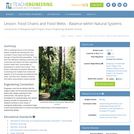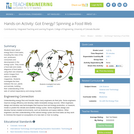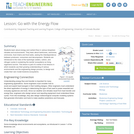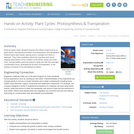
Students will be introduceed to the food chain and begin to develop an understanding of how the energy flows from one organism to another.
- Subject:
- Life Science
- Material Type:
- Lesson Plan
- Author:
- Chassidy Altman
- Date Added:
- 07/18/2016

Students will be introduceed to the food chain and begin to develop an understanding of how the energy flows from one organism to another.

With a continued focus on the Sonoran Desert, students are introduced to the concepts of food chains and food webs through a PowerPoint® presentation. They learn the difference between producers and consumers and study how these organisms function within their communities as participants in various food chains. They further understand ecosystem differences by learning how multiple food chains link together to form intricate and balanced food webs. At lesson end, students construct food webs using endemic desert species.

Students learn about energy flow in food webs, including the roles of the sun, producers, consumers and decomposers in the energy cycle. They model a food web and create diagrams of food webs using their own drawings and/or images from nature or wildlife magazines. Students investigate the links between the sun, plants and animals, building their understanding of the web of nutrient dependency and energy transfer.

Students learn about energy and nutrient flow in various biosphere climates and environments. They learn about herbivores, carnivores, omnivores, food chains and food webs, seeing the interdependence between producers, consumers and decomposers. Students are introduced to the roles of the hydrologic (water), carbon, and nitrogen cycles in sustaining the worlds' ecosystems so living organisms survive. This lesson is part of a series of six lessons in which students use their growing understanding of various environments and the engineering design process, to design and create their own model biodome ecosystems.

What do plants need? Students examine the effects of light and air on green plants, learning the processes of photosynthesis and transpiration. Student teams plant seeds, placing some in sunlight and others in darkness. They make predictions about the outcomes and record ongoing observations of the condition of the stems, leaves and roots. Then, several healthy plants are placed in glass jars with lids overnight. Condensation forms, illustrating the process of transpiration, or the release of moisture to the atmosphere by plants.

In this lesson, students will define their dominant roles online, explain the benefits of each type of online role and discuss the responsibilities and risks inherent in each type of online interaction. This lesson is part of a media unit curated at our Digital Citizenship website entitled "Who Am I Online?"